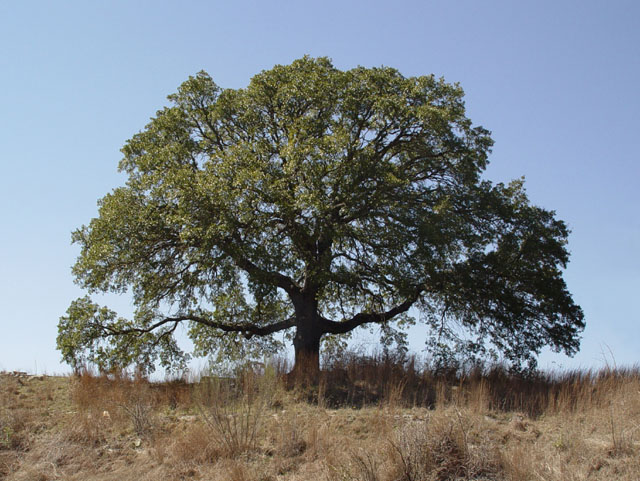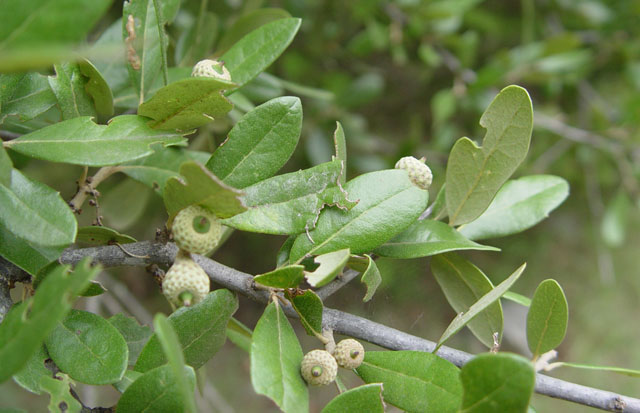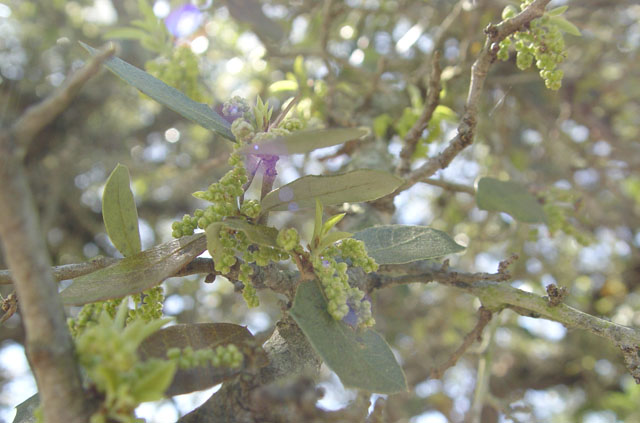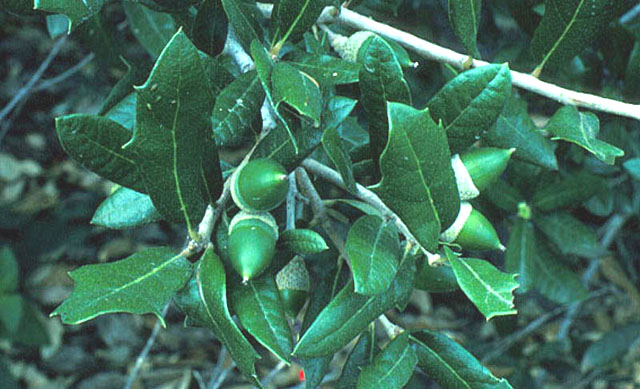Quercus fusiformis
Small

Quercus fusiformis Live Oak, courtesy of Melody Lytle


Quercus fusiformis foliage and immature fruit, courtesy of Melody Lytle
Trees like full sun and produce green catkins in the spring. This species often retains its leaves, requires litle moisture and tolerates high temperatures.

Quercus fusiformis Live Oak bloom, courtesy of Melody Lytle
The tree get its scientific name from the mature acorn/fruit, which has a very fusiform apex (fusiform means distinctly narrowed).
Acorns turn brown as they mature.

Quercus fusiformis Live Oak fruit, courtesy of Aggie Horticulture
Hemileuca grotei
Hemileuca maia
Hemieleuca peigleri
Hemileuca slosseri
The following North American butterfly species utilize Quercus fusiformis as a larval host.
Hesperiidae:
Erynnis horatius
Erynnis propertius
Use your browser "Back" button to return to the previous page.
This page is presented by
Bill Oehlke. This site
is presented as an extension of the
World's Largest Saturniidae Site, a private worldwide silkmoth site,
Caterpillars Too!,
a private North American butterfly site featuring images of
caterpillars,
and
Sphingidae of the Americas,
a free public access site with pictures and information about
the Sphingidae (Hawkmoths) of the Americas.
Tree information is from Aggie Horticulture
Larval hostplant lists have been compiled from
the Natural History Museum's
HOSTS - a database of the world's Lepidopteran hostplants